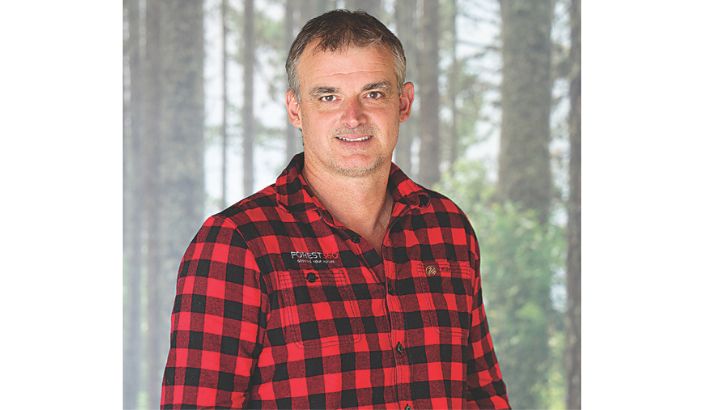OPINION: The apprehension of tariffs is weighing heavy


Marcus Musson, Forest360. Photo: Supplied.
Marcus Musson - Forest360
May is the month you can generally set your watch to being the export price tipping point, and this year is no different. Prices have dropped from the highs of February and March by around $15/m3 to the early to mid-$110’s/m3. As with April, there is a range of around $14/m3 between the highest and lowest exporter offerings and the usual spread of around $20/m3 between northern and southern ports. This puts the 3-year average for Southern North Island ports at a shade over $120/m3 for A grade.
The 3-year average price is very important when looking at trends and unfortunately this has been on a downward trajectory since early 2023, which is no surprise considering that was about when the wheels really started falling off the Chinese construction market.
Putting price to one side, the metrics don’t look too bad. Chinese port inventories are down around half a million cubic metres from April at 3.5Mm3 and uplift remains solid at 70,000m3 per day. As usual, NZ had a bumper first quarter in terms of volume production and with a 5-week delay from the stump to Chinese ports, it takes a while for this to play out in the market. There are already signs of less vessel arrivals as a result of the poorer April prices and wetter weather, and this will likely continue well into June. If we could get inventory levels below 3 million m3 we would be able to borrow a pair of Trump’s negotiating shoes and reposition ourselves on the supply/demand curve.
No matter which way you look at it, China remains our most important trading partner for the forest industry by a country mile, taking around 60% of NZ’s harvest production in log form. Total softwood log imports into China fell from around 50 million cubic metres in 2021 to around 25 million in 2024 and the good news for NZ is that our market share has grown from 40% to 70% over the same period – so a larger piece of a smaller pie.
It’s not only logs that are imported to China as lumber also arrives in significant volumes. If you convert the lumber volume into a log equivalent volume, the total softwood imports into China in 2021 was a shade over 75 million log cubic metres of which NZ supply was around 25%. Fast forward to 2024 and the total softwood import number is around 50 million cubic metres with NZ sitting in first place in terms of supply at 36% and Russia a fast follower at 32%.
If you’re a pure numbers person you’d be getting excited about recent increases in Chinese exports which rose 12.4% in March and 8.1% in April. Part of those exports will be furniture, and furniture is made from lumber which comes from logs, NZ logs. Unfortunately, it’s pretty easy to see this is likely a result of tariff front loading rather than any change in real demand. In reality, the inverse is happening with a drop in furniture grade log prices (Pruned logs) in China as tariffs start driving negative sentiment amongst furniture manufacturers which is less than ideal.
The domestic timber market is softer than the Greens’ justice policy and many sawmills dropped framing timber prices by around 5% in April. There are some expectations that this will be reversed in coming months with some of the larger sawmills notifying customers of increases between 5% and 7%. Whether this will have any flow-on to sawlog log prices is yet to be seen as prices are now generally fixed until the end of the quarter. There is definite pressure on pruned log prices as the clearwood market continues to be equally as flaccid, especially in the Asian markets. The apprehension of tariffs is weighing heavy and even though there is a tariff exemption into the US for NZ timber for the next 60 days, it’s anyone’s guess where it will land.
Carbon prices have edged up and sit at $53.30/NZU at time of writing which is heading in the right direction, slowly. This is welcome relief after a period at sub $50 courtesy of the Climate Change Commissions recommendations that unsold auction units be reintroduced at auctions at a later date. The carbon game is no different from the log trade in that price fluctuations are driven by sentiment and supply/demand imbalances. Fingers and toes are crossed for further strengthening which may be supported by an expectation that many forest owners have sold what they needed to and will now sit on units and wait for better times. Historically, carbon prices have increased throughout the second half of the year as credit flows slow following the June 30 cutoff for claiming 2024 units.
So, in a nutshell, it’s all a bit average really. This is nothing new for this time of year and if the current market conditions come as a surprise, you’ve not been around long enough. It will improve, maybe not in the next month or so, but the reducing inventory will put pressure on price and anytime you can get a number better than the 3-year average, you’re on the right side of the ledger. Holding out for a number reminiscent of those offered three or four years ago might be like waiting for Zelenski to give Putin a hug.
